Alpensia Ocean 700 (알펜시아 오션700)
2020-04-02
325, Solbong-ro, Pyeongchang-gun, Gangwon-do
+82-33-339-0100
Alpensia Resort is a beautiful and exciting resort that offers unique programs unavailable at other resorts. Among their facilities, Alpensia Ocean 700 suits as the perfect family water park, located on the refreshing highland of Daegwallyeong at an altitude of 700 meters. The water park aims to provide convenient and relaxing facilities in an indoor area where visitors can have fun at any time of the year.
Ilgwang Beach (일광해수욕장)
2021-07-05
17, Samseong 3-gil, Gijang-gun, Busan
+82-51-709-4000
Ilgwang Beach is a popular beach for families with a white sandy beach and Gangsongjeong Pine Tree Forest. With shallow waters and a clear view of the ocean, there is also Samseongdae Pavilion built during the late Joseon dynasty. There are numerous accommodation, dining and convenience facilities near the beach as well as a place to fish. Moreover, Ilgwang Beach hosts a festival annually in late July or early August.
The Ocean Resort (디오션리조트)
2025-03-16
295, Soho-ro, Yeosu-si, Jeollanam-do
+82-1588-0377
The Ocean Resort is located in Yeosu-si, Jeollanam-do, perfect for tourism. With two national parks nearby and all rooms facing the ocean, visitors can relax and enjoy the view. Hotel amenities include a golf course, water park, sauna, and other leisure facilities, available all year long.
Gangjin Goryeo Celadon Kiln Site (강진 고려청자 요지)
2022-12-29
Sadang-ri, Gangjin-gun, Jeollanam-do
+82-61-430-3755
Daegu-myeon of Gangjin-gun was the primary site of Goryeo dynasty celadon production between the 9th and the 14th centuries. Covering approximately 150 acres of land in nine villages, the area has been designated as the National Historical Site since 1963, and continues to protect its 180 fire kilns and maintain the sophisticated art of celadon production. Meanwhile, celadons produced in this area have also been designated as national treasure, and regarded highly worldwide for their artistic value, so much so that some are preserved in the Louvre Museum in France.
Cheongpung Land (청풍랜드)
2025-07-09
San 26, Gyo-ri, Cheongpung-myeon, Jecheon-si, Chungcheongbuk-do
+82-43-648-4151
Cheongpung Land est un parc de loisir créé en 2002 près du lac de Cheongpunghoban (lac de Chungjuho à Cheongpung-myeon, Jecheon-si dans la province du Chungcheongbuk-do. Le parc accueille trois attractions pleines de sentations fortes : une tour de saut à l’élastique haute de 62 mètres, le tout premier siège éjectable de Corée et « Big Swing », une expérience à gravité nulle. On peut également y admirer des geysers d’eau jaillissant à 162 mètres dans l’air, ainsi qu’une vue panoramique sur le paysage environnant.
Le parc est l’une des plus grandes attractions touristiques de la région, et se trouve non loin d’autres destinations populaires, comme le site de tournage du drama historique de KBS « Daejo Wangeon », le mont Geumsusan et le parc national de la montagne Woraksan.
Samcheok Cheokjudonghaebi & Pyeongsutochanbi Monuments (삼척 척주동해비 및 평수토찬비)
2023-04-18
13-7, Heomok-gil, Samcheok-si, Gangwon-do
+82-33-859-5708
Erected by Heo Mok, the governor of Samcheok during the second year of King Hyeonjeong's reign (1661), Cheokjudonghaebi Monument is 170 centimeters tall. It was originally built to protect the village on Mallido Island that had been frequently inundated by heavy rain and rough waves. It is believed that the mystical inscription, penned by Heo Mok, on the monument calmed the rough sea waves. Today, the monument stands to prove the wisdom and distinguished penmanship of the former Samcheok City Governor.
Pyeongsutochan-bi Monument is 145 centimeters tall. It was erected by Heo Mok's successor and former governor of Samcheok, Jung Un-cheol, in reverence for his wise forebear. The monument contains
48 ancient Chinese characters that describe many achievements of Heo Mok.
Jukseoru Pavilion (삼척 죽서루)
2025-02-03
37 Jukseoru-gil, Samcheok-si, Gangwon-do
+82-33-570-3670
Jukseoru Pavilion, estimated to have been built around 1266, is one of the eight major attractions of Gwandong District in middle eastern Korea collectively known as Gwandong Palgyeong (eight famous sites). Sitting on the edge of a cliff overlooking Osipcheon Stream, the pavilion incorporates the rocks on the cliff as cornerstones, with a five-girder paljak (ancient-style roof).
Then, there are 26 signboards hanging from the rafters of the pavilion. The signboards contain inscriptions of famous ancient scholars such as 'Jeilgyeongjeong' ('The best riverside pavilion'; 1662) by Heo Mok, 'Jukseoru' and 'Gwandong Jeilru' ('The best pavilion in Gwandong'; 1711) by Yi Seong-jo, and 'Haeseon Yuhui Jiso' ('The place that marine gods enjoy'; 1837) by Yi Gyu-heon. Others who have left their mark include King Sukjong (1674-1720), King Jeongjo (1776-1800) and Yulgok YiYi (1536-1584). Evidently, Jukseoru Pavilion has served as an inspiration since its establishment, and continues to inspire visitors today through the stunning view of its surrounding nature.
Chungju Jungangtap Park (중앙탑공원 (충주))
2022-12-29
6 , Tapjeongan-gil, Chungju-si, Chungcheongbuk-do
+82-43-842-0532
Chungju Jungangtap Park is home to the Seven-story Stone Pagoda in Tappyeong-ri (National Treasure), set before the beautiful scenery of the Namhangang River. The stone pagoda was built during the Unified Silla period and was the largest stone pagoda at that time. Because of its location in the middle of the nation, it was called Jungangtap (jungang means middle in Korean). The area around the pagoda was made into a sculpture park, with 26 art pieces from artists all over the country.
Chokseongnu Pavilion (촉석루)
2021-07-30
626, Namgang-ro, Jinju-si, Gyeongsangnam-do
+82-55-749-5171
Standing grandly above the rocky cliffs of Namgang River is Chokseongnu Pavilion, arguably one of the most beautiful nugak buildings (multi-storied structure without walls) in the Yeongnam region. Chokseongnu (historically known as ‘Jangwollu’) has undergone eight renovations since its establishment in the 28th year of King Gojong (1241, Goryeo dynasty) and was once used as a commanding post for defending Jinju Palace in times of war. During times of peace, it was used for holding state examinations.
Although the structure was burnt down during the Korean War, it was restored in 1960 through the efforts of the Jinju Historical Site Preservation Society. The roof design features a mix of hipped and gabled styles and the stone pillars were built with rocks collected from Chokseoksan Mountain, located in Changwon-si. The wood used for the structure was brought from Odaesan Mountain, situated in Gangwon-do. Noticeable features of Chokseongnu are the four engraved signboards and a board that holds the works of renowned poets and calligraphers. Jinju Namgang Yudeung (Lantern) Festival is held every fall at the Jinjuseong Fortress.
Buyongdae Cliff (부용대)
2024-11-29
72 Gwangdeoksolbat-gil, Andong-si, Gyeongsangbuk-do
Buyongdae Cliff is about 64 meters high, situated where the Taebaek Mountain Range ends. From the summit, one can get a bird’s-eye-view of Hahoe Village in Andong. The name was taken from the ancient name of the village in Chinese. Meaning lotus, Buyong is said to have been the name of Hahoe Village, given its configuration of houses spread out like a lotus flower. Thus, one can get the best view of the village from the cliff. Located near Buyongdae are Ogyeonjeongsa House, Gyeomamjeongsa House, and Hwacheonseowon Confucian Academy.
◎ Travel information to meet Hallyu’s charm - variety show"I Am Solo"
This spot featured in the show as a date spot. The participants sat on mats laid out by the Nakdonggang River and took pictures in pairs with Buyongdae Cliff in the background. You can also head to the top of the cliff to get a great view of Hahoe Village, one of Andong’s most famous tourist sites.
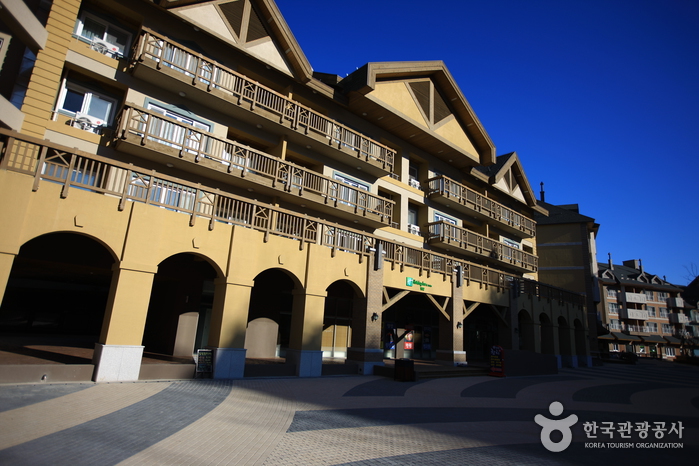
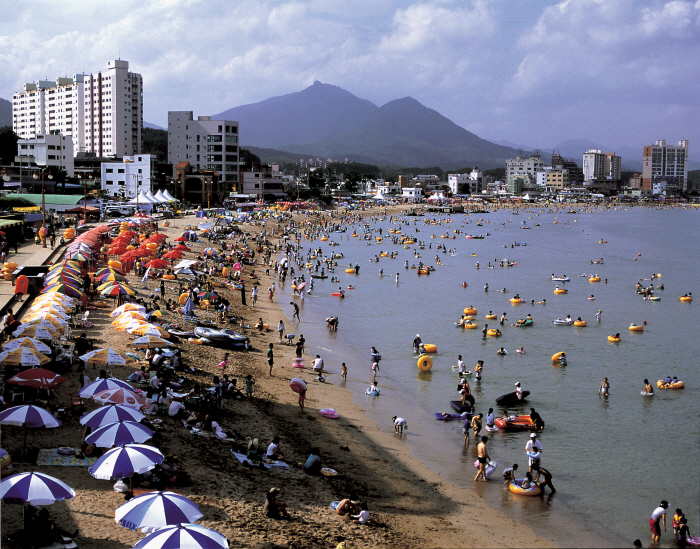
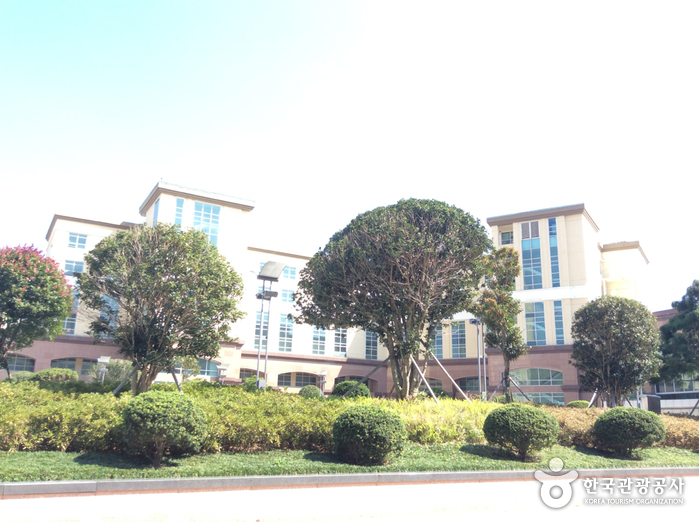
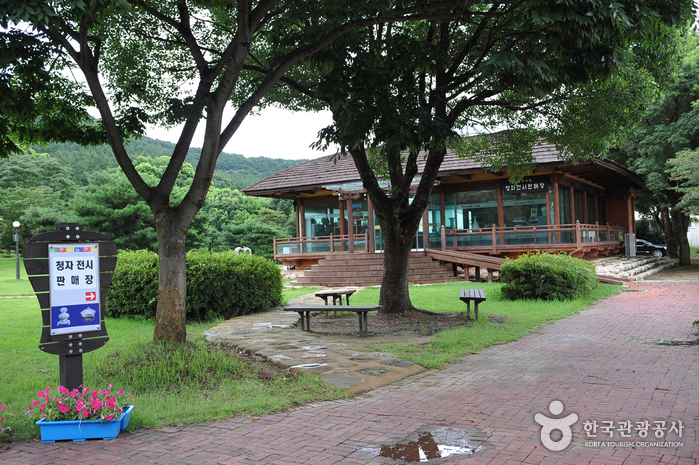
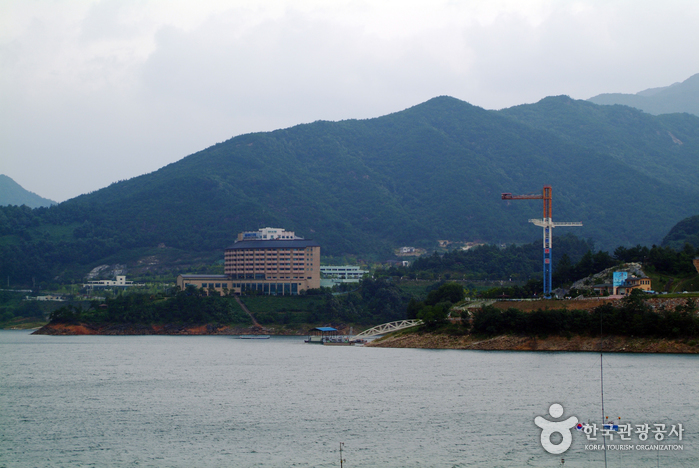
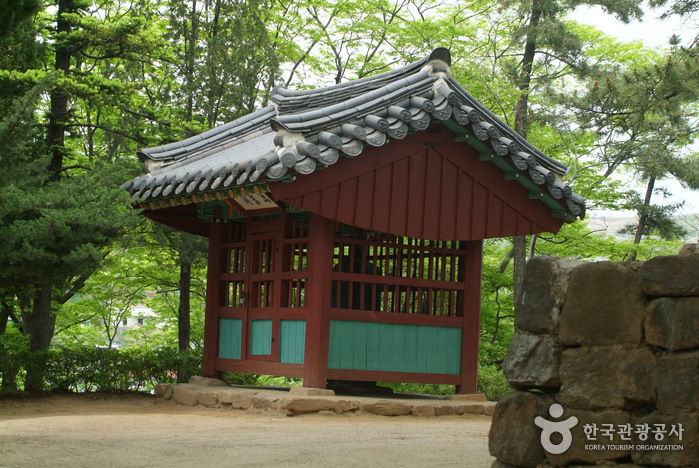
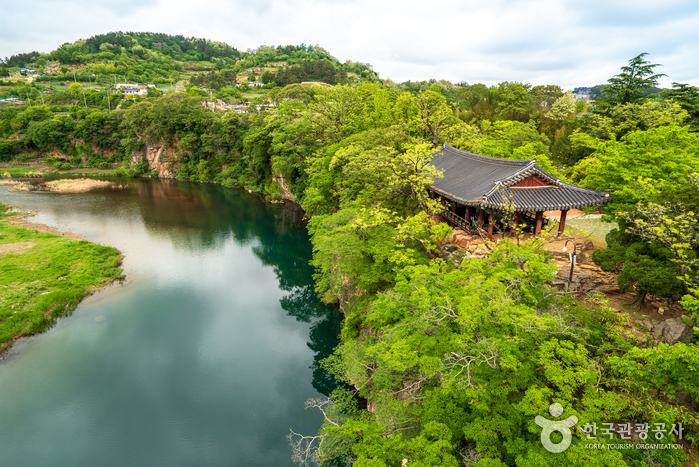
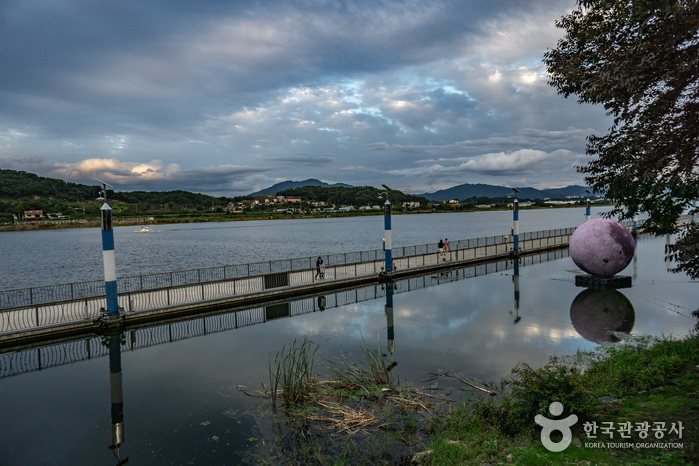


 English
English
 한국어
한국어 日本語
日本語 中文(简体)
中文(简体) Deutsch
Deutsch Français
Français Español
Español Русский
Русский